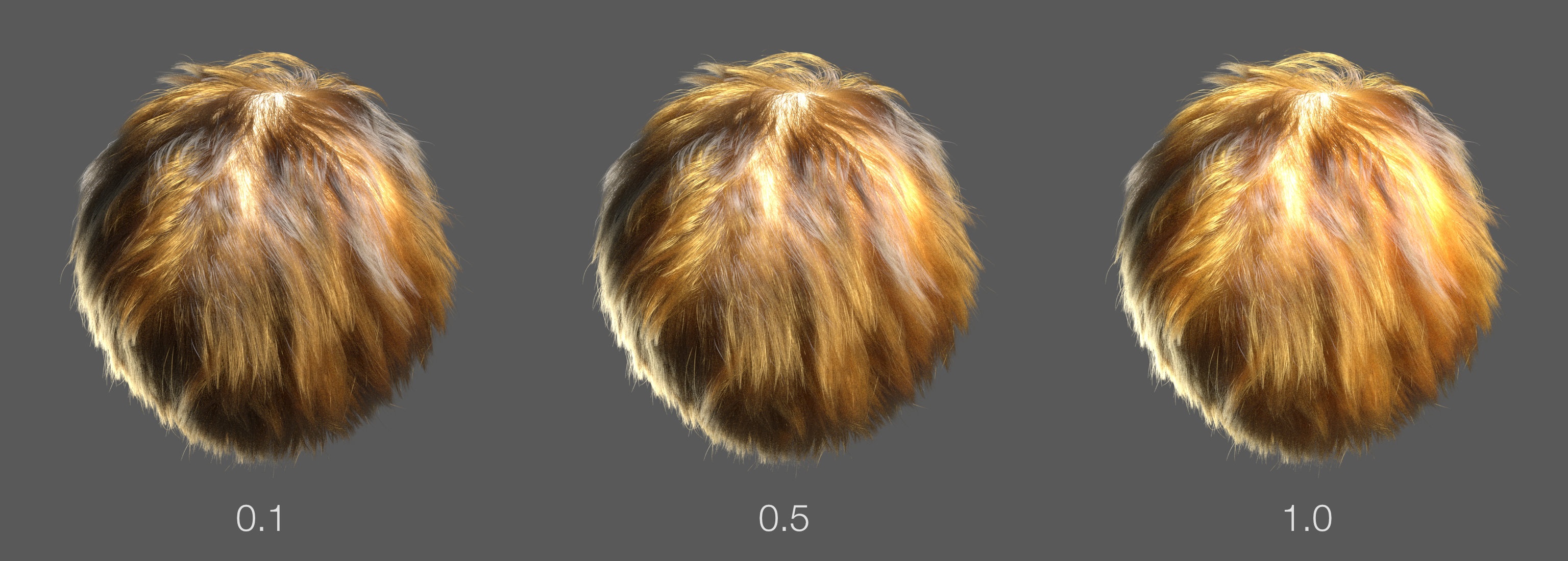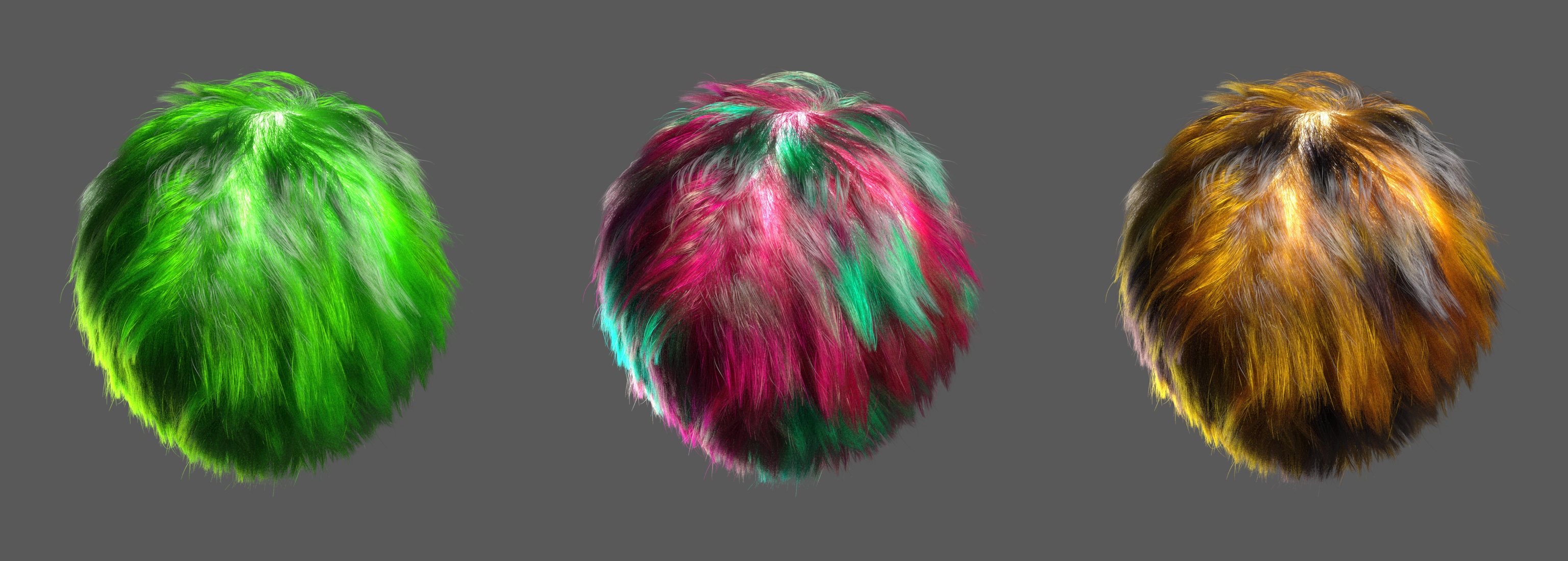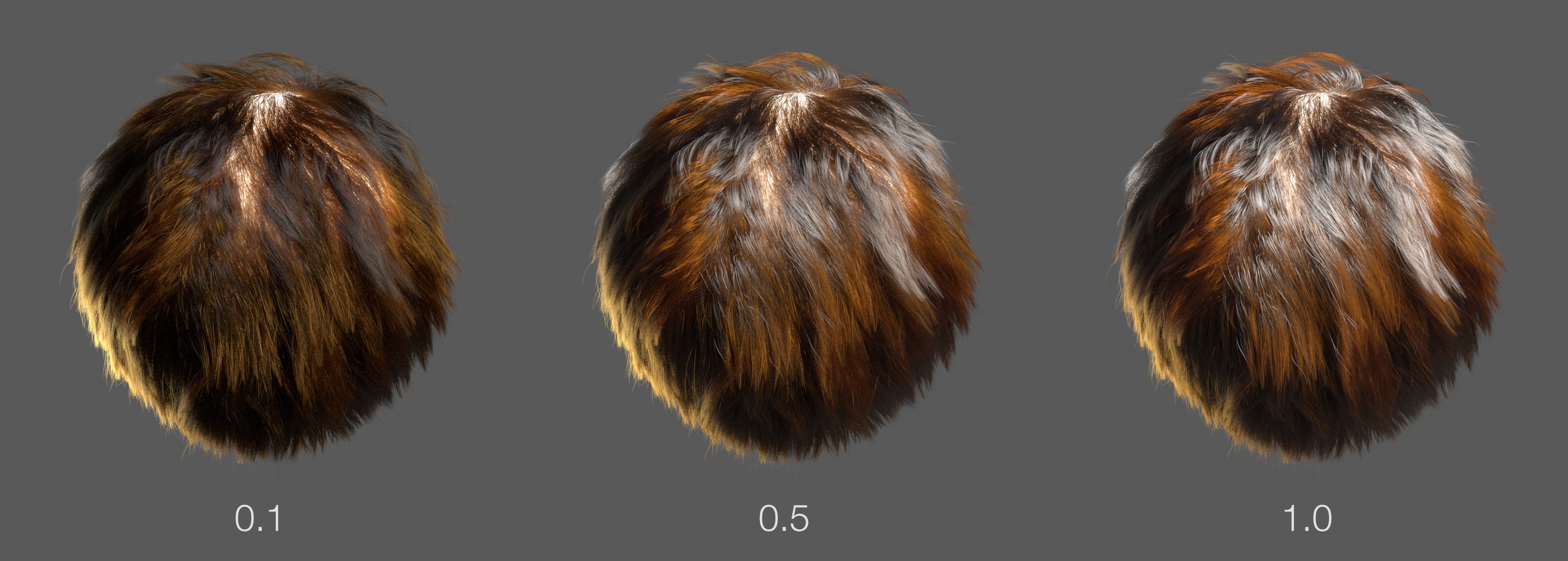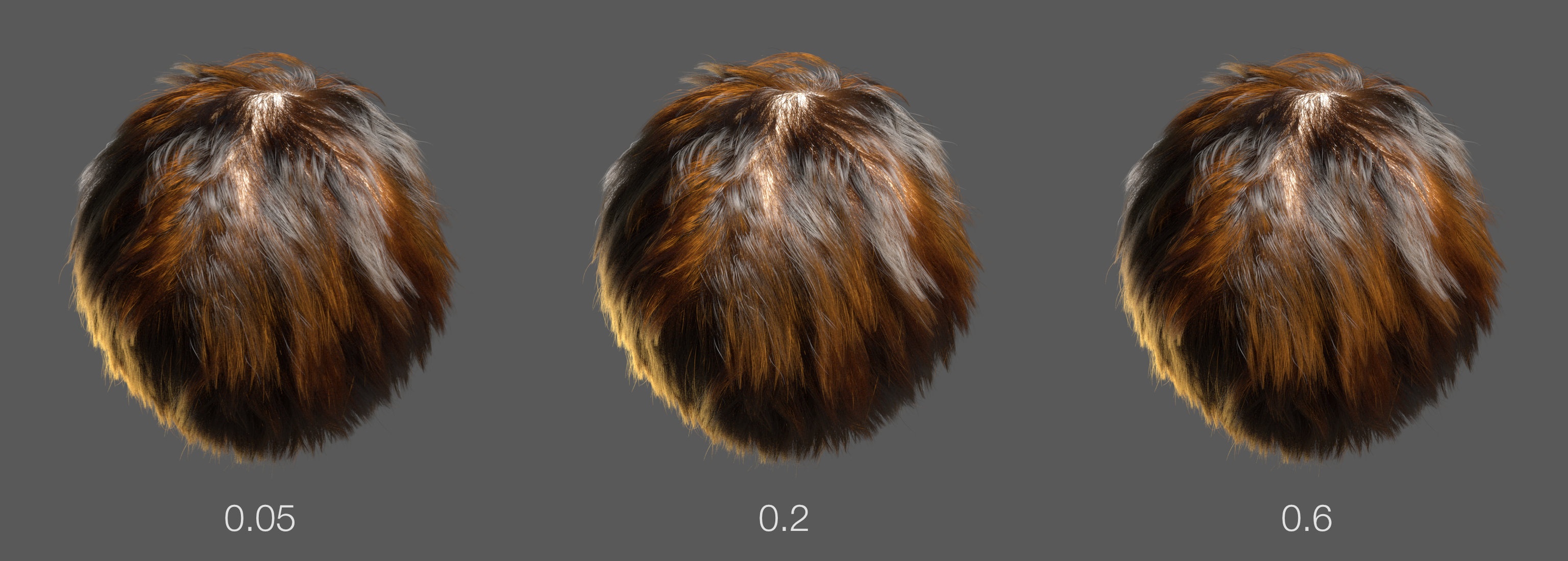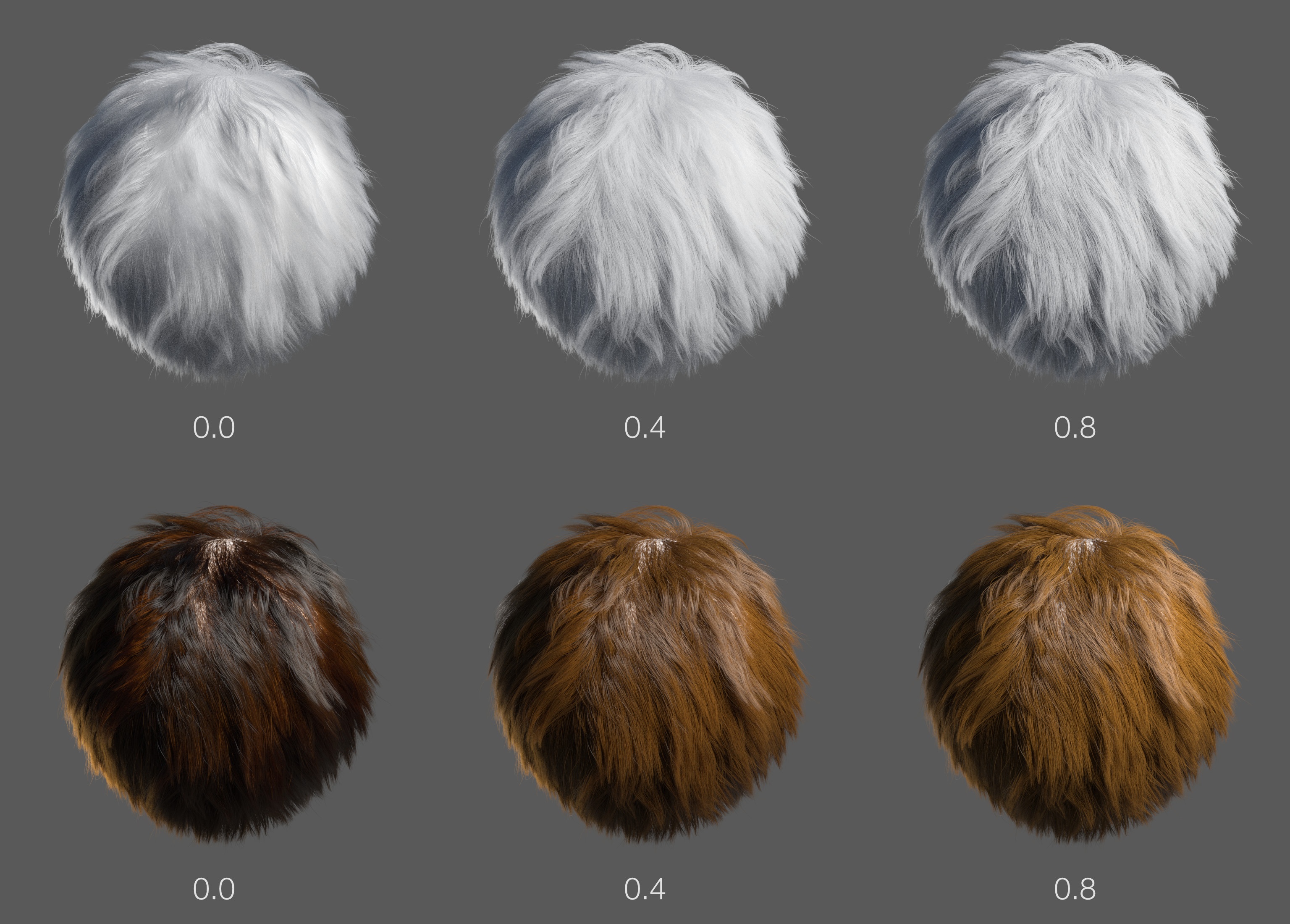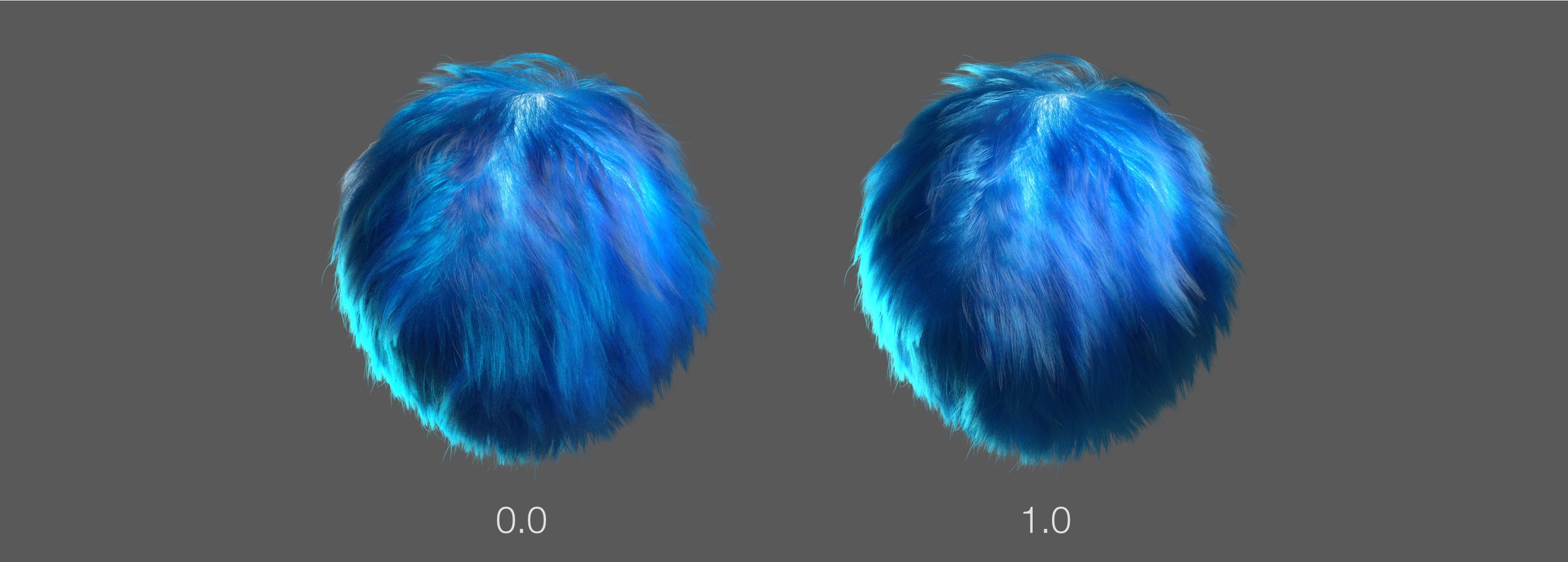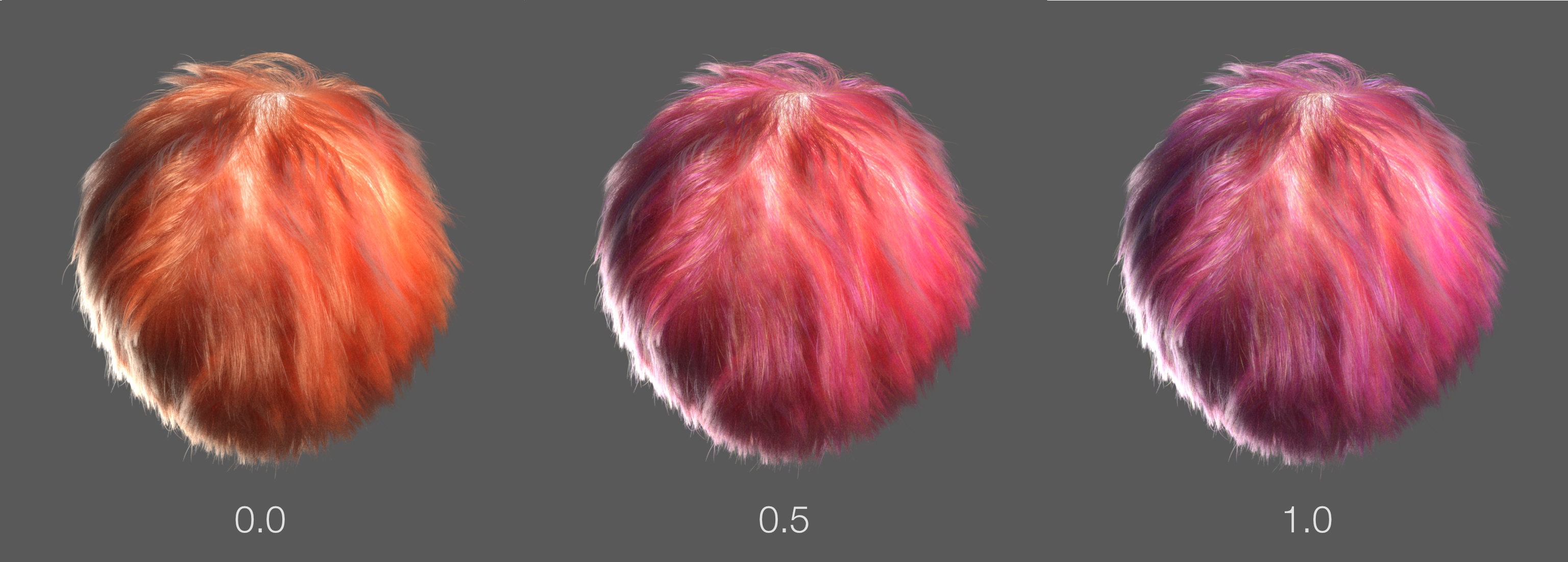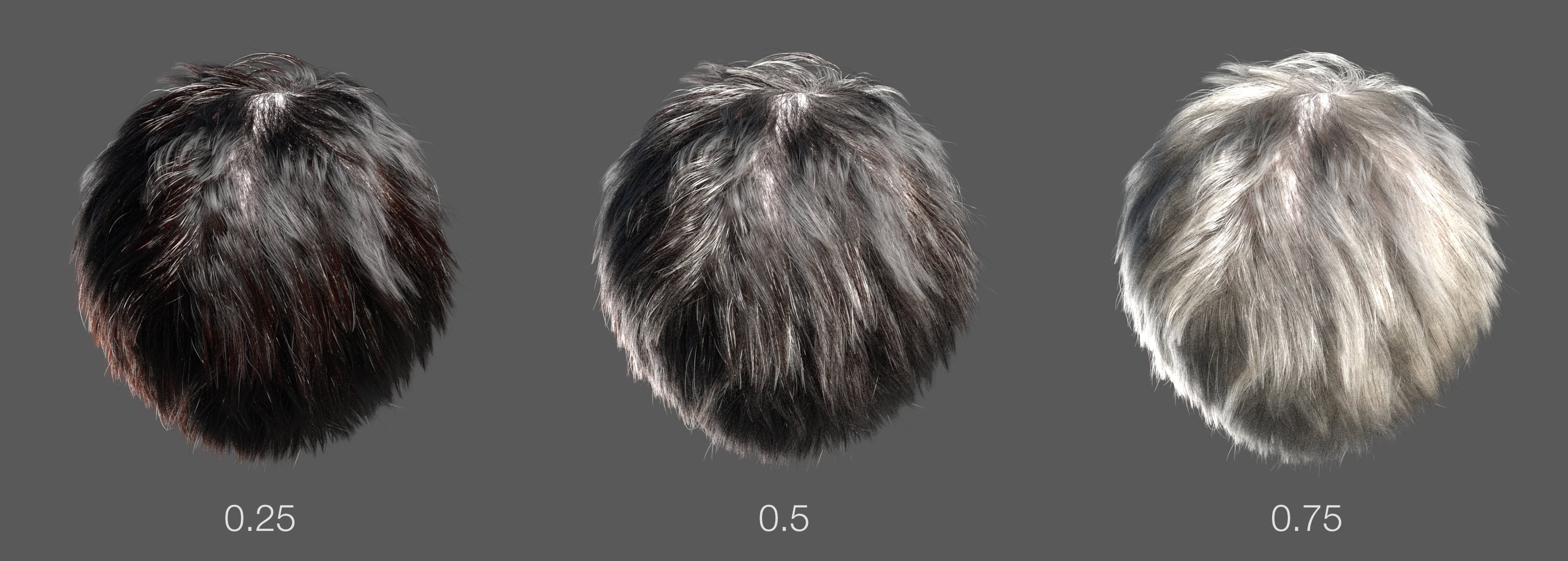...
The 3Delight Hair and Fur material is
...
an artist friendly, yet physically plausible
...
, hair and fur
...
shader. Internally, the shader relies on a Monte-Carlo simulation
...
to explore the different light paths inside a medium (in this case, a clump of hair) to produce an image.
...
An interesting aspect of hair rendering is that all the intricate visual details seen in hair stem from the scattering of light in a multitude of hair strands and is not due to the complexity of the BRDF on a single hair strand. This seemingly simple observation explains why so many complex shaders are not successful at conveying a realistic look for hair. This includes the widely used shaders based on the Marschner model not using volume scattering.
...
The complexity of this process is hidden from the artist which controls only high level shader parameters such as color and roughness.
Note the glow caused by light scattering inside blond and light coloured red hair. Also note how black hair has nice silky features. The "glint" is caused by caustics inside hair strands and is not an after thought of the shading model. All these features necessitate proper simulation of light scattering in hair clumps.
...
| width | 35% |
|---|
| Panel | ||||||||
|---|---|---|---|---|---|---|---|---|
| ||||||||
|
Parameters Description
| Info |
|---|
Before explaining the parameters of the material in detail, take note that :
|
...
Parameter
...
Color
_______________________
Color |
|---|
Melanin
This parameter, along width the Melanin Redness, controls the generation of natural-looking hair colors. It sets the amount of melanin in each hair strand. Colors will range from white at around 0 to blonde at around 0.2 to red and brown around 0.5 and to black at the maximum value of 1.0.
Melanin Redness
Controls the redness of hair. In more technical terms, this controls the proportion of red pheomelanin (as found in red hair) relative to the amount of eumelanin.
Dye Weight and Dye Color
It is sometimes desirable to render non-natural looking colors for hair. Using a dye color allows setting the color directly, without using the melanin parameters. The dye weight allows mixing both methods using a simple mix. Setting the Dye Weight to 1 will use only Dye Color and setting it to 0 will only use Melanin and Melanin Red. All values in between will use a mix of both.
Look |
|---|
Specular Level
Sets the overall specular level for hair. Values closer to 0 will render rough looking hair, values closer to 1.0 will render very shiny hair.
Roughness Along
Roughness Around
Medulla
Synthetic Fiber
Variation |
|---|
Natural looking hair requires a slightly different variations from one hair strand to the next (having totally uniform parametrisation over the entire hair clump is generally only possible for synthetic hairs). The values in this section allow to randomly vary most parameters by a certain amount. Note that the variation is coherent from frame to frame in animation. A value of 0 indicates no variation for the parameter, a value of 1 indicates the largest possible variation and will be closer to a totally random value.
Dye Hue Variation
White Hair
This parameter controls the amount of white hairs in the clump of hair.
Technical Notes
An interesting aspect of hair rendering is that all the intricate visual details seen in hair stem from the scattering of light in a multitude of hair strands and is not due to the complexity of the BRDF on a single hair strand. This seemingly simple observation explains why so many complex shaders are not successful at conveying a realistic look for hair. This includes the widely used shaders based on the Marschner model not using volume scattering. Our
...
Cuticle Angle
...
Index of Refraction
...
Longitudinal
...
Azimuthal
...
Primary Multiplier
...
Reflection Weight
...
Transmission Weight
...
TRT Weight
...
Strength
...
Softness
...
The shader simulates 3 scattering events from one single hair strand and then proceeds with a Monte-Carlo simulation to follow light paths inside the hair volume.
...
| Column | ||
|---|---|---|
| ||
|
| Column | ||
|---|---|---|
| ||
The three main components of light scattering: Reflection (R), Transmission (TT) and 2nd Order Reflection (TRT). |
R is the light directly reflected from the surface of a hair strand. In many other hair materials this is referred to as the primary highlight. TT is the transmission of light through the hair strand and interacting with the interior of the strand (absorption). This is responsible for the back lighting visible through the hair when a light is behind a hair clump. TRT is the secondary reflection of light traveling through the hair twice before going back to the same side it entered. As this light path gets absorbed twice it is dimmer than R and TT. In many other hair materials this is referred to as the secondary highlight. The following images show a final image and each component rendered separately.
...
Final
...
R
...
TT
...
Note that it offers no control over directly reflected color. Direct reflections have the same color as the incoming light. Any coloured visual features are due to light passing through a strand of hair.

